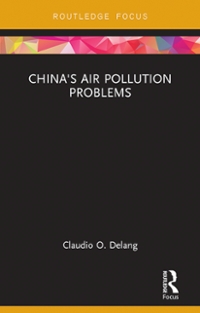Solve .the following questions as attached.
3. Consider an economy with A consumers and B rms. Each consumer is endowed with one unit of time and one piece of capital. A representative consumer's utility function is u(:r, r) = ins: + 21n r, where .r is consumption of goods and r = 1 l is leisure time and I. the time working. Each rm hires consumers to work and rents capital from consumers to produce goods according to technology: y = KaLl'a', where a 6 (0, 1) is a. parameter, K is the amount of capital rented by the rm and L is the amount of labor hired by the rm. All consumers and rms take goods price p, wage rate to and rental rate q as given. Normalize p = 1. (a) [10 points] Set up a representative consumer's utility-memorization problem. Derive the Marshallian demands for .1: and r. (b) [10 points] Set up a representative rm's prot-maximization problem. List the rst-order conditions regarding the choices of K and L. (c) [10 points] List the marketclearing conditions for markets of capital, labor and goods respectively. (d) [20 points] Use the results from (a)(c) to calculate equilibrium rental rate 4} and the Marshallian demand for r. 3. Let V be the vector space of 2 x 2 symmetric real matrices, that is, matrices of the form [3i E], where x, y, z 6 IR. Let A = [g l], and let A' denote the matrix transpose of A. We dene a linear map 19 : V > V, by setting 6(M) = AMA' for any M e V. The map 6 is linear and takes values in V; you don't have to prove this. 3) Find an ordered basis Q for V. b) Find the matrix representation [6] 12,1; of 6 in your basis Q. c) Compute the eigenvalues of 6 andgive bases for each of the corresponding eigenspaces. d) Find an invertible matrix T, such that T'1[0]b_bT = D, a diagonal matrix. Write down the matrix D. What is an ordered basis in which D is thematrix representation of 0? e) Compute 01 ( [f H) by hand, and explain your computation. Here, 610 means \"apply the transformation 6 ten times consecutively\". Your answer should be a symmetric two by two matrix. (You can use an ordinary calculator if you wish, or leave short formulas in your answer. For example, a formula like \"317 2'3 + 1\" would be an acceptable form of a matrix entry in your answer. You are not allowed to use a computer algebra system to take powers of a matrix.) EF5400 Advanced International Trade Practice Problem Set 1 1. Consider an economy in which there are two countries, i = 1,2, and a continuum of goods, indexed by ke [0, 1]. Goods are produced using labor: Mi (k ) = 4 (1) / m (k) . where a; (k) is the unit labor requirement for producing good & in country i, y (k) is the output of good & produced in country i and l (k) is the amount of labor used in production. Assume that the unit labor requirement functions are an (k) = call-*) 12 (k) = cox The representative consumer in each country has the utility function [ lage ( R ) LA. This consumer is endowed with 4 units of labor where h = 12 = I. (a) Define an equilibrium of the economy. Calculate expressions for all of the equilibrium prices, p.(k), and quantities, c(k), y:(k), and (k). Draw a graph that illustrates the pattern of specialization in production, consumption, and trade. (b) Suppose now each country imposes an ad valorem tariff ~ on imports from the other country. Repeat the analysis of part (a). (c) For the model in part (b), calculate GDP in each country. 2. Consider an economy in which there is a continuum of goods, s E [0, 09). which are ordered so that higher-indexed goods involve more advanced tech- nologies in the production process. An individual consumer has preferences given by u(c) = e- log (c(s, t ) + 1) ds dt.1. Question 1: the Real Business Cycle Model Consider an economy consisting of a constant population of infinitely-lived in- dividuals. The representative individual maximises the expected value The instantaneous utility function u(Ct) = C; 6 (Ct + 02, 6 > 0. Assume that C is always in the range where u' (C) is positive, and that Q's are i.i.d. taste shocks with mean zero. Output is linear in capital: Y; = AKt. There is no depreciation; thus Kt\" = Kt + Y; Ct, and the interest rate is A. Assume A = p. (a) Find the rst-order condition (Euler equation) relating Cr and the expecta- tions of CH1 and explain its meaning. (20 points, 200 words) (b) Guess that consumption takes the form Ct = a + Kt + 75.5. Given this guess, What is K+1 as a function of Kt and Q? Interpret your results. (20 points, 200 words) (c) What values must the parameters a, ti, and 7 have for the rst-order con- dition in part (a) to be satisfied for all values of Kt and Q? Interpret your results. (20 points, 200 words) (d) What are the effects of a one-time positive shock to (t equal to (1 + A) on the paths of Yt, Kr, and Ct? Interpret your results. (20 points, 200 words) (8) Interpret the Covid-19 Pandemic as a (negative) taste shock, i.e. people have a lower appetite for consumption. How would you adjust your answer in part (d)? (20 points, 200 words)










